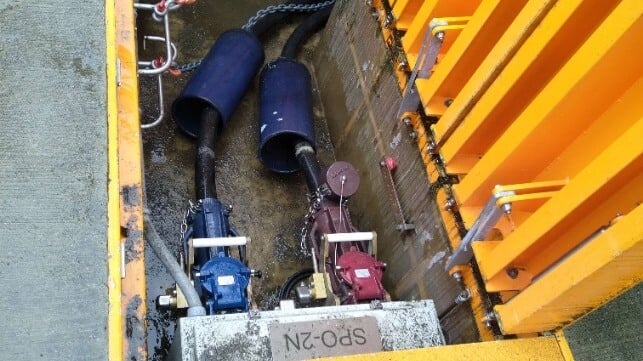Study: EU is Falling Behind on Shore Power Investments

Ports in Europe are facing criticism for sluggish investments in shore power infrastructures, and a majority will fail to meet a 2030 deadline set by the European Union requiring the provision of onshore power supply, according to the activist NGO Transport & Environment (T&E).
The NGO reports that only one in five required shore power connections is currently installed or contracted, an indication of slow uptake across most ports. Of Europe’s 31 biggest ports, only four have installed or contracted more than half of the connections required by 2030. This means most container ships, cruise ships and ferries continue to run on fossil fuels while docked.
The EU has set a 2030 deadline requiring ports to provide shore power as part of the bloc’s Green Deal. The regulations apply for container, cruise, and passenger vessels above 5,000 gross tonnage. All other vessel types, such as bulk carriers and tankers, are currently excluded from shore power obligations.
Shore power is critical in cutting down emissions of carbon dioxide and other pollutants. T&E analysis shows that ships at berth emitted 8.3 million tonnes of CO? in European ports in 2023, accounting for 6.4 percent of total European shipping emissions. Cruise ships, in particular, have been cited as the biggest emitters: they spend significantly more time at berth, and produce more than six times more port-side emissions than container ships.
In the study, T&E highlights that the ports of Algeciras in Spain and Hamburg in Germany account for over half (19 out of 34) of all installed container ship dockside power connections. The study shows that the ports of Livorno in Italy, ?winouj?cie in Poland and Valletta in Malta are the other frontrunners in shore power investments, having installed or contracted more than half of the required installations.
The worst laggards, according to the study, are the ports of Antwerp, Dublin, Gdansk and Lisbon, which have yet to invest in any electric plug-in infrastructure.

that matters most
Get the latest maritime news delivered to your inbox daily.
“Ports are failing local residents and passengers by allowing unnecessary pollution from idling ships. Electric plug-in technology is available and would reduce shipping’s impact on local air pollution and the climate overnight. For shipping segments that spend a lot of time at ports like cruise ships, plugging in would be a gamechanger,” said Inesa Ulichina, T&E shipping policy officer.
The NGO is now calling on the EU to bring forward shore power requirements for cruise ships to 2028, ensure ports can earn clean energy credits when ships plug in, dedicate more EU funding for port electrification, and expand the rules to cover all ships.
